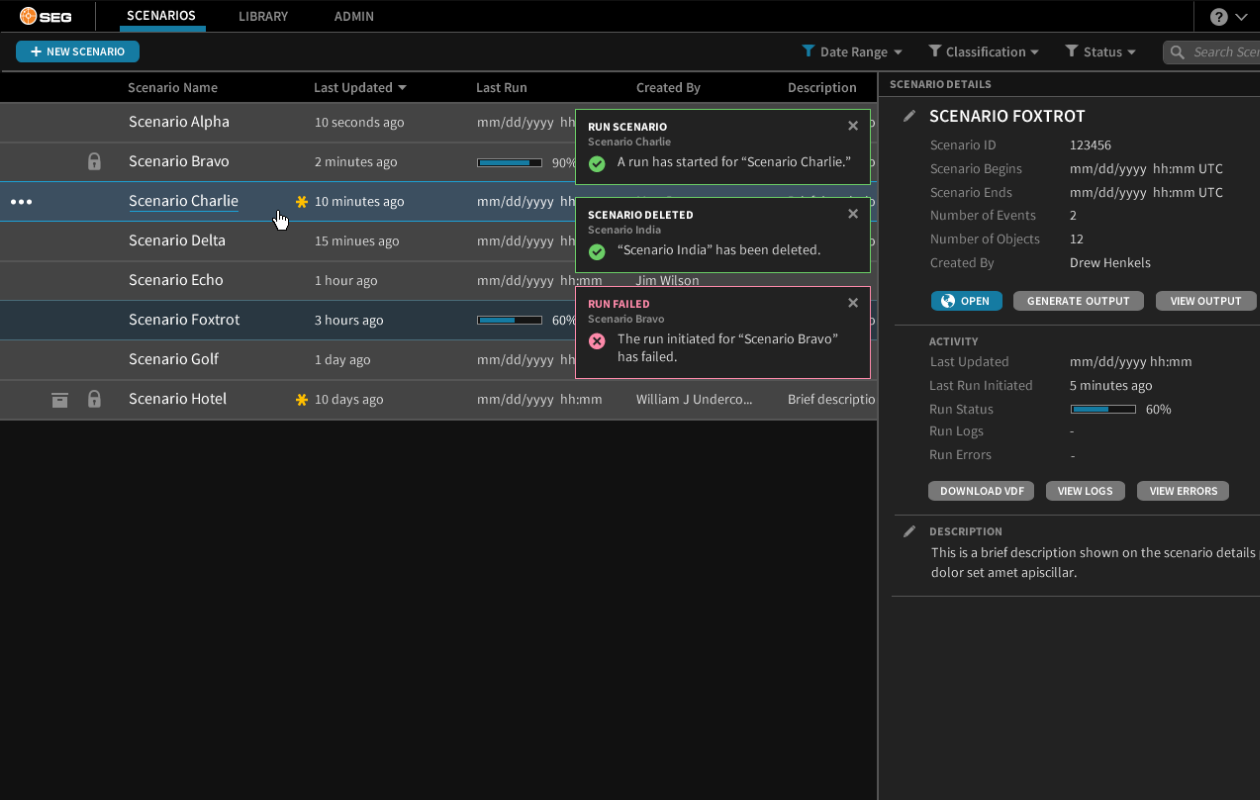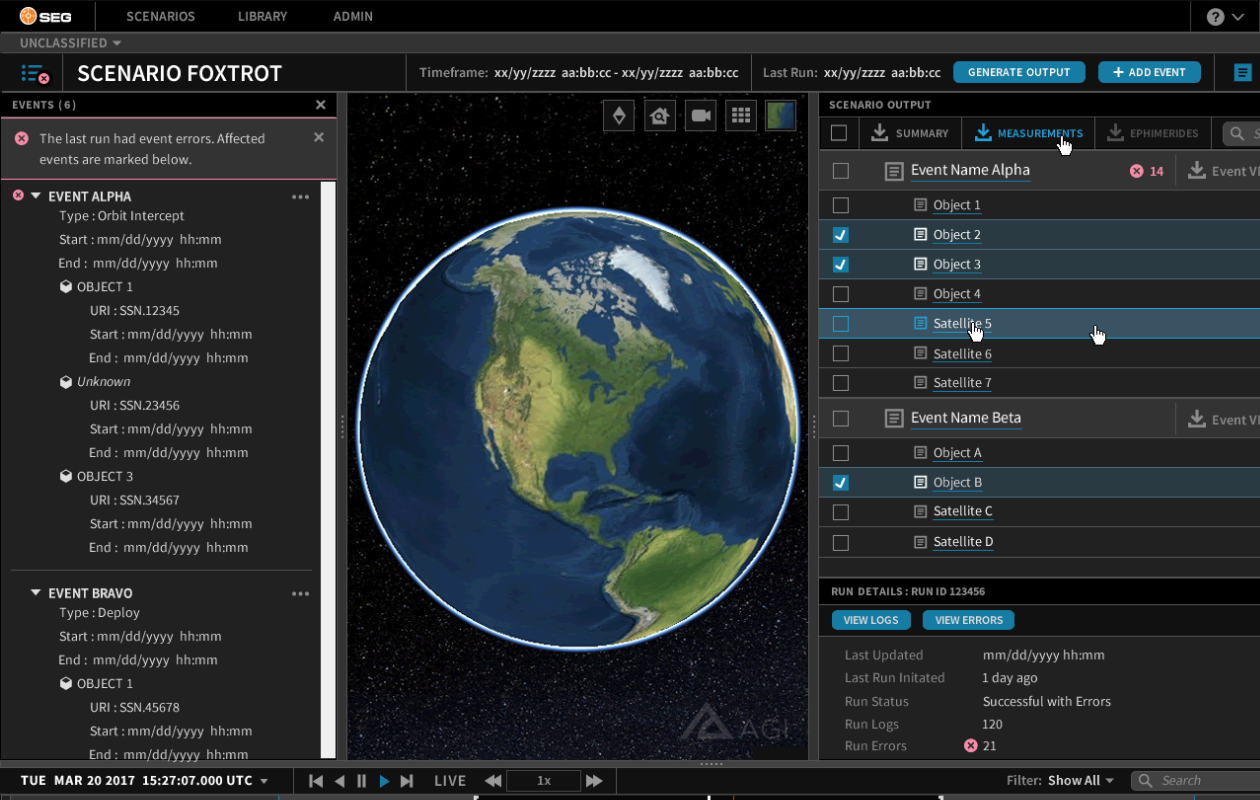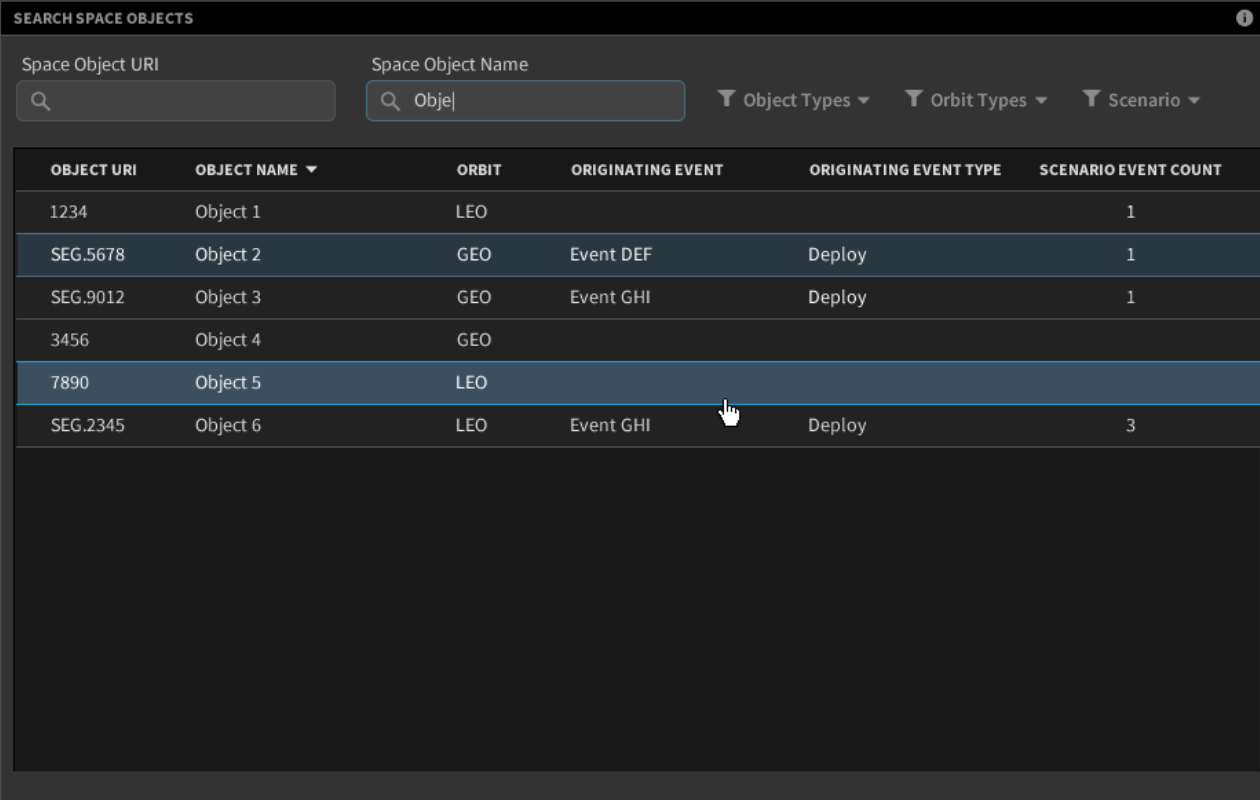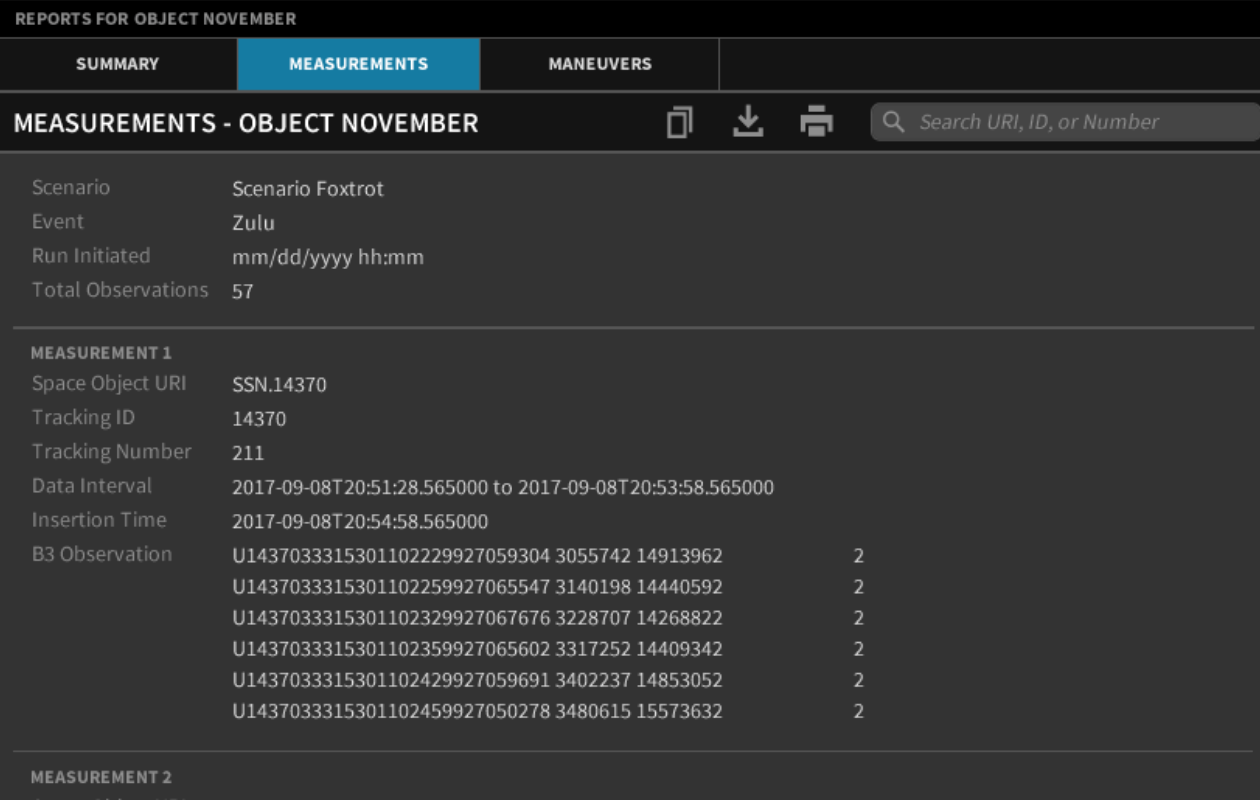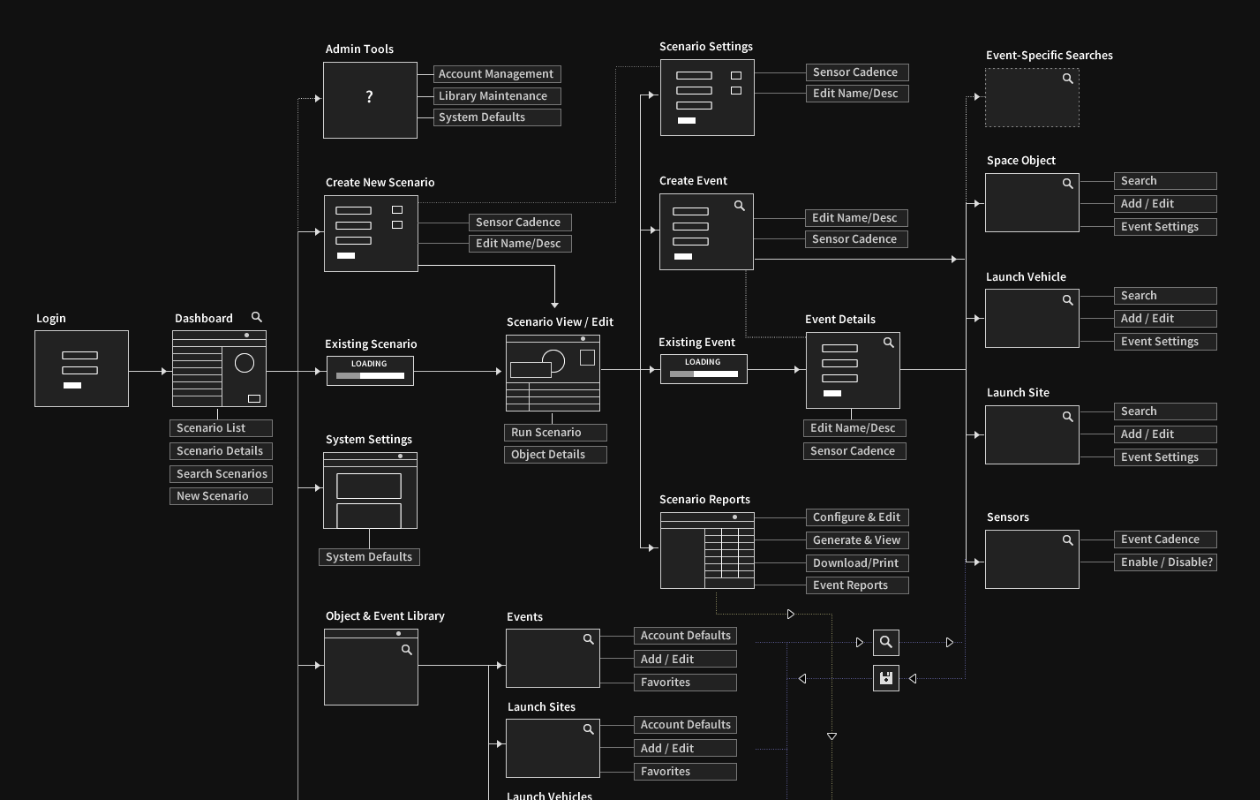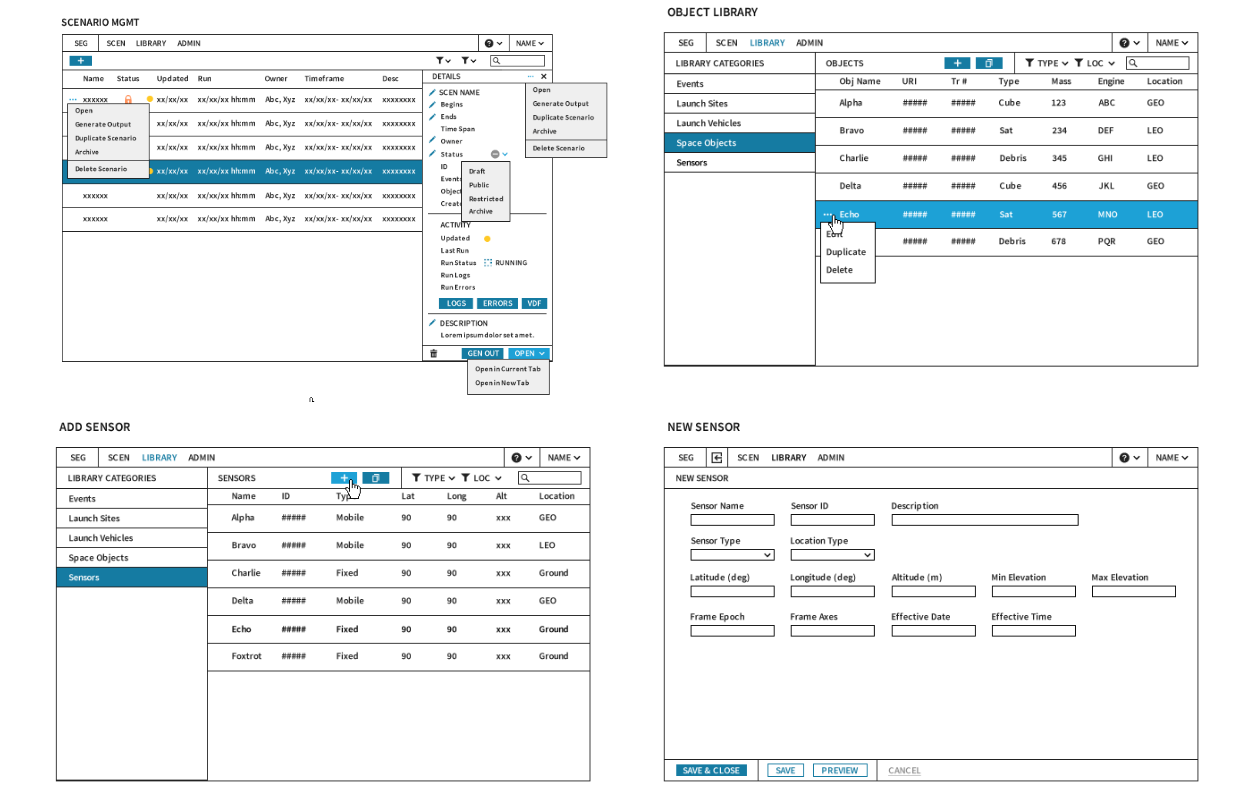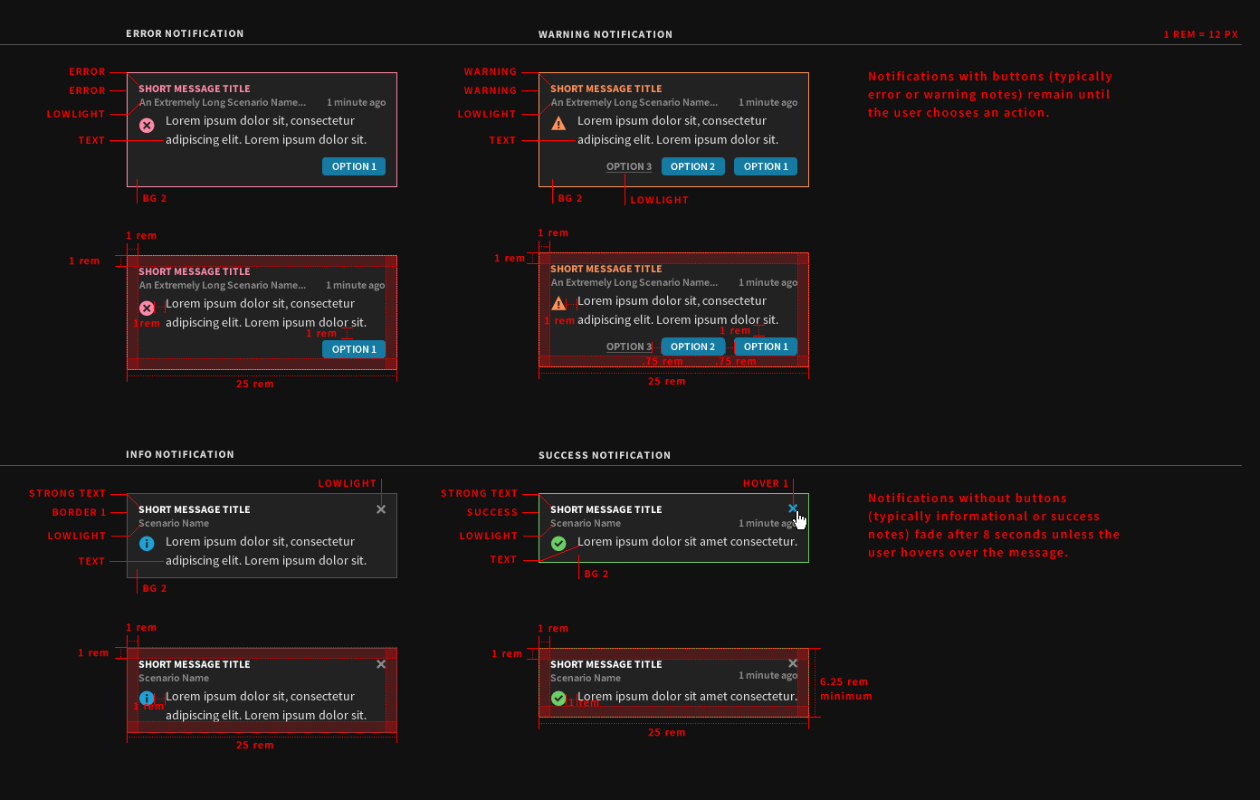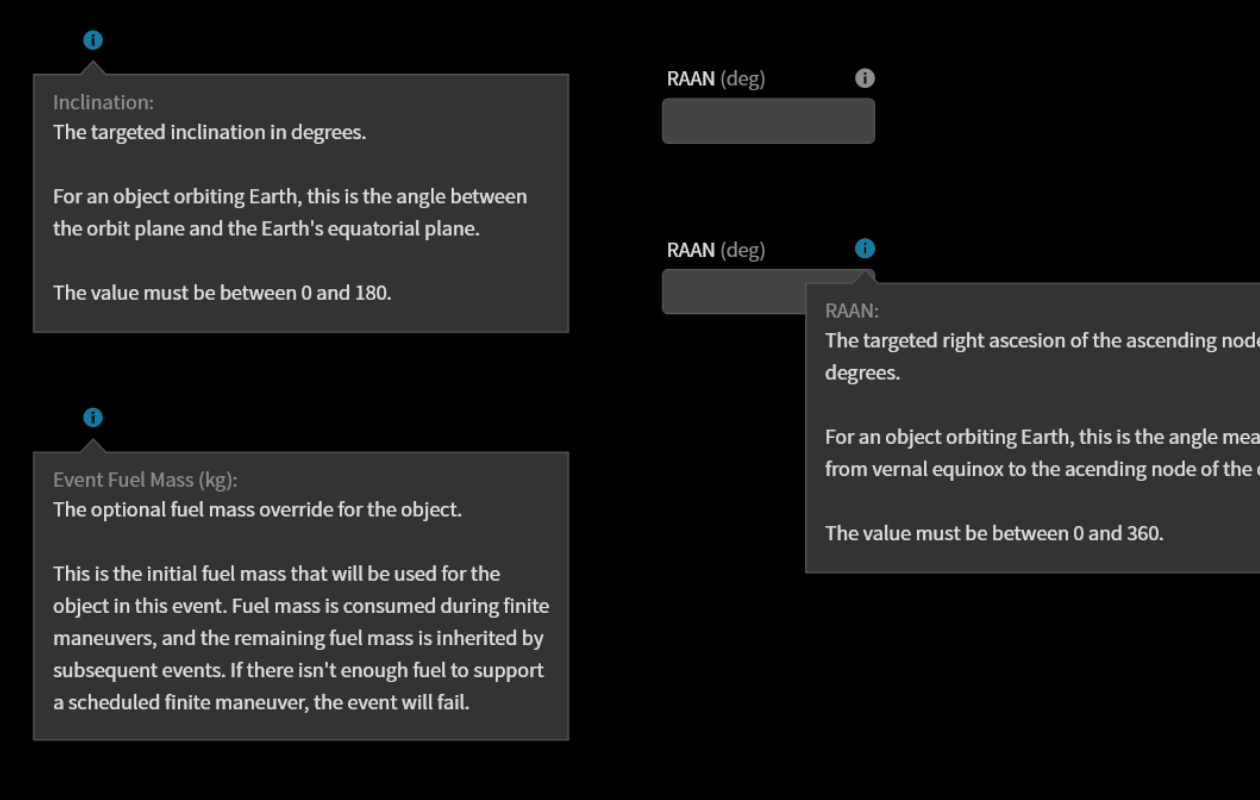SPACE EVENT GENERATOR
A simulation tool for visualizing and planning for space-based threats
With the ever-increasing profusion of satellites and debris above us, spacecraft maneuvers and other events in space are difficult to model, execute, and evaluate. With multi-million-dollar machines on the line, customers need the ability to plan out and visualize these risky situations with high-fidelity physics.
GALLERY
DETAILS
Requirements
- Create and manage scenarios
- Select assets from a variety of system libraries
- Select and configure spacecraft maneuvers and other events
- Generate and export scenario reports
- Modify scenario's settings, particularly sensor cadence
- Review system error reports
My Involvement
- Role : Sole designer
- Timespan : 2 years
Scale : Full browser-based aerospace application, with all layouts, visual styles, written content, image assets, and iconography
Story
With the ever-increasing profusion of satellites and debris above Earth, spacecraft maneuvers and other events in space are difficult to model, execute, and evaluate. With multi-million-dollar machines on the line, customers need the ability to plan out and visualize these risky situations with high-fidelity physics.
Working closely with engineers and aerospace experts, I first needed to understand what they meant to build and why. I began with interviewing the experts to understand their needs. It quickly became evident that several members of the team had very different ideas about what was to be built.
To begin building consensus, I started with a workflow diagram. This had to be reworked several times concurrently with wireframing, as the requirements and their priorities continued to shift throughout planning and development.
Fortunately, I had already established a set of visual styles and widgets for another concurrent project, and these styles were reused to both provide consistency within the company and to speed design work and development. SEG had many unique widgets and features that required new analysis, but my small UX team's style guide made the high-fidelity mockups and red-line specifications much easier.
A notable challenge with this project was providing in-context help. Due to the complex physics and math underlying the event creation forms, simple field labels could leave users confused about exactly how the inputs would interact with one another to determine the results. To aid understanding, I wrote help fly-outs for almost all fields, revising them multiple times to make the language as comprehensible as possible.
